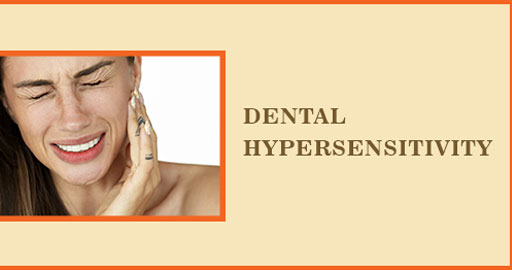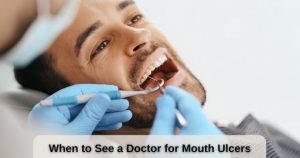
Dealing with Dental Hypersensitivity: Causes, Symptoms, and Treatments
After you eat stuff hot or cold, have you ever experienced a sudden wave of discomfort? This known as dental hypersensitivity, or झनझनाहट in Hindi. Billions of people worldwide suffer from the widespread ailment known as dental hypersensitivity.
When eating or drinking, it may give you a hot or cold feeling, which can be painful. Let’s explore the causes, symptoms, and practical treatments of dental hypersensitivity in this blog post in order to assist you better comprehend and manage this problem.
Understanding Dental Hypersensitivity
A severe, rapid, and fleeting discomfort in reaction to a variety of stimuli, such as temperatures that are hot or cold, acidic or sweet foods, or even simple brushing and flossing, is the hallmark of dental hypersensitivity. This disorder arises when the dentin beneath the tooth surface becomes visible, maybe as a result of recession of the gums, degradation of the enamel, or other causes, enabling outside stimuli to enter the pulp of the tooth and stimulate its nerve ends.
Symptoms of Dental Hypersensitivity
Because dental hypersensitivity produces strong, excruciating pain, it can greatly interfere with day-to-day activities. It can have the following effects on several facets of daily life
- It becomes difficult to enjoy favorite foods and drinks because hot or cold objects, sugary or acidic substances, and even the force generated from chewing can cause pain or discomfort. This could result in completely avoiding particular foods or beverages, which would have an impact on nutrition and meal enjoyment.
- Speech can also be impacted by dental hypersensitivity, primarily if specific noises or motions hurt. To reduce discomfort, people could stop talking or change the way they speak, which can affect social interactions and communication.
- Keeping your teeth clean becomes challenging when flossing and brushing cause unexpected pain flare-ups. People can require more time for brushing properly or avoid some regions completely, which could result in poor oral hygiene and possible oral health problems like gum disease and cavities.
- Constant discomfort brought on by dental hypersensitivity can seriously lower quality of life and increase tension, worry, and frustration. Pain can cause poor sleep quality if it interferes with sleep patterns.
Diagnosis of Dental Hypersensitivity
Dental hypersensitivity, also known as tooth sensitivity, is when patients experience discomfort or pain in their teeth in response to certain stimuli such as hot, cold, sweet, or acidic foods and beverages, or even cold air. Detecting dental hypersensitivity typically involves a combination of visual examination, x-rays, and other tests. Here’s how each of these methods can help in diagnosing dental hypersensitivity:
Visual Examination:
- Dentists are able to visually assess gums and teeth for hypersensitivity. This entails searching for indications of tooth decay, exposed dentin, gum recession, and areas of eroded enamel or wear.
- Teeth surfaces that are bright, rounded, or smooth can be signs of enamel erosion.
- The tooth roots may become more sensitive as a result of receding gums.
X-rays (Radiographs):
- With the help of X-rays, dentists can see within teeth and the surrounding bone in great detail, which helps them find any underlying problems that may be causing dental hypersensitivity.
- X-rays can identify tooth cracks that could be causing sensitivity or dental caries, or cavities.
- Additionally, they may exhibit symptoms of periodontal disease as well, such as increased sensitivity and gum recession brought on by decreased bone density around the teeth.
Other Tests:
- In order to assess the degree and particular causes of dental hypersensitivity, dentists may conduct tests. In order to elicit a response, these tests may entail introducing stimuli to the teeth, such as air that is cold, warm or cold water, or either sweet or acidic substances.
- To measure the degree of gum recession or enamel loss, as well as the sensitivity of various tooth regions, dentists may employ dental explorers or probes.
- The tooth pulp, which may be impacted by severe sensitivity or pulpitis, which (inflammation of the pulp), can be evaluated using electronic instruments, such as tooth vitality tests.
Causes of Dental Hypersensitivity
Dental hypersensitivity can be caused by a number of reasons, including:
- Enamel Erosion: The dentin can become visible when the enamel, the tooth’s outermost layer of protection, wears away over time as a result of severe brushing, eating foods that are acidic, or dental disorders.
- Gum Recession: The roots of teeth, that are less well-protected than the crown and hence more sensitive, may become seen when the gums recede.
- Tooth Decay: Cavities and tooth decay can leave gaps that let chemicals that cause sensitivity to enter the nerve endings.
- Bruxism, or teeth grinding: Sensitivity may be momentarily increased by certain dental procedures, such as crown implantation or teeth whitening.
- Dental Procedures: Some dental treatments, such as teeth whitening or crown placement, may temporarily cause sensitivity.
Management of Dental Hypersensitivity
Dental Hypersensity is treatable, and there are a number of ways to ease the discomfort and pain:
- Desensitizing Toothpaste: Special toothpaste formulated for sensitive teeth can help block pain signals and strengthen enamel over time.
- Treatments with Fluoride: Applying fluoride professionally helps improve tooth enamel and lessen sensitivity.
- Dental Sealants: To create a barrier that protects exposed dentin, dentists might use dental sealants.
- Dental bonding or fillings: When decay in the tooth is the cause, cosmetic dentistry may rebuild the structure of the tooth and reduce sensitivity with bonding or fillings.
- Gum Grafting: To conceal exposed roots and lessen sensitivity, a gum grafting surgery can be carried out if receding gums is the problem.
- Modifications to Lifestyle: Steer clear of acid and sugary foods, use a toothbrush with soft bristles, and clean your teeth more gently to stop additional enamel erosion.
- Mouthguards: Using a mouth guard at night might lessen enamel wear by preventing teeth grinding.
Conclusion
Although dental hypersensitivity can cause discomfort, it can be controlled with the right attention and cosmetic dentistry procedures. It’s critical to see a dentist if you suffer from dental hypersensitivity symptoms so they can identify the underlying reason and suggest a course of therapy.
You can enjoy your favorite foods and beverages without worrying about tooth discomfort if you take the proper precautions. To effectively prevent and manage dental hypersensitivity, it is essential to practice proper oral hygiene and schedule routine dental examinations.
By: Dr. Nayanika Batra
Leave a Reply
Leave a Reply





















